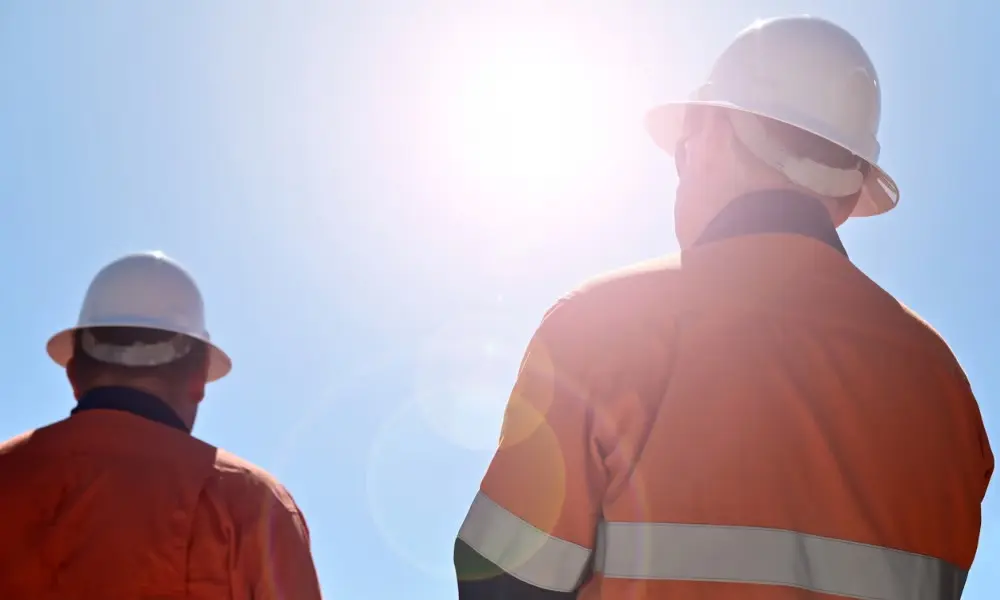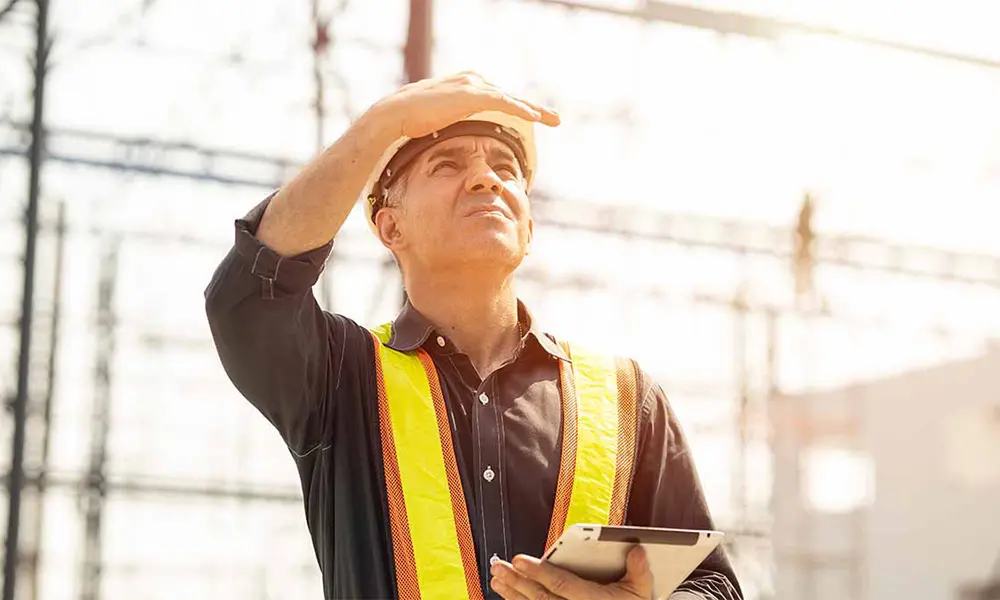Nearly one in three deaths from non-melanoma skin cancer can be linked to working outdoors under the sun, according to new research, raising alarm against work exposure to solar ultraviolet radiation amid searing heat as of late. New research from the International Labour Organization (ILO) and the World Health Organization (WHO) underscored the vulnerability of outdoor workers to non-melanoma skin cancer risk.

What is skin cancer risk when working outdoors?
Exposure to ultraviolet (UV) radiation from the sun is a major risk factor for skin cancer risk. Outdoor workers, such as those in construction, agriculture, and other industries, often spend long hours in the sun, putting them at an increased risk of developing skin cancer. The primary types of skin cancer associated with sun exposure are basal cell carcinoma, squamous cell carcinoma, and melanoma.
Which factors contribute to the risk of skin cancer for outdoor workers?
- Duration of Sun Exposure: Prolonged exposure to the sun over many years due to the working outdoors increases the risk of developing skin cancer.
- Intensity of UV Radiation: Workers who spend time in regions with high UV radiation levels. Especially during peak hours (10 a.m. to 4 p.m.), are at an elevated risk.
- Skin Type: Individuals with fair skin that burns easily are more susceptible to skin damage and have a higher risk of skin cancer.
- Protection Measures: The use of protective measures, such as wearing wide-brimmed hats, long-sleeved clothing, and sunscreen, can help reduce the risk.
- Geographical Location: Workers in regions closer to the equator or at higher altitudes may experience higher levels of UV radiation.
1 in 3 non-melanoma skin cancer deaths due to outdoor work
New report calls on employers to protect staff from ultraviolet solar radiation.
This is a “common type of cancer that starts in the top layer of skin” that is caused by UV. According to the United Kingdom’s National Health Service.
In 2019, almost 19,000 people in 183 countries died from the disease after working outdoors in the sun, with 65% of the victims being male, according to the WHO-ILO report, which shown that skin cancer risk is one of the hidden death reason by working outdoors.
In the same report, skin cancer risk linked to occupational exposure to sunlight also went up from 10,088 in 2000 to 18,960 in 2019, up by 88%.
Calls for protection from skin cancer risk
The findings underscore how occupational exposure to solar ultraviolet radiation is a work-related risk factor as the world continues to heat up due to climate change.
“Unprotected exposure to solar ultraviolet radiation by working outdoors is a major cause of occupational skin cancer risk,” said WHO Director-General Tedros Adhanom Ghebreyesus in a statement.
“But there are effective solutions to protect workers from the sun’s harmful rays and prevent their deadly effects.”
According to the research, governments should establish, implement, and enforce policies and regulations such as:
- Providing shade
- Shifting working hours away from the solar noon
- Providing education and training on the matter
- Equipping workers with sunscreen and personal protective clothing
According to the report, organizations should offer employees awareness regarding the link between sun exposure and skin cancer. Additionally, the report recommends providing services and programs to detect early signs of skin cancer risk.
Gilbert Houngbo, ILO Director-General, said employees have the fundamental right to a safe and health working environment.
“Death caused by unprotected exposure to solar ultraviolet radiation while working outdoors is largely preventable through cost-effective measures,” Houngbo said in a statement.

Government measures
The findings come as governments early this year implemented varying measures to protect employees from increasingly warmer afternoons due to climate change.
Saudi Arabia and the United Arab Emirates previously implemented a midday work ban to protect employees working under direct sunlight, which decrease skin cancer risk.
Hong Kong also launched a three-tier warning system for heat stress, while the Philippines issued an advisory calling for flexible work arrangements to limit employees’ exposure to extreme heat.
“It is urgent that governments, employers and workers and their representatives work together in a framework of well-defined rights, responsibilities and duties to reduce the occupational risk of UV exposure. This can save thousands of lives every year,” Houngbo said.
What is the symptom of skin cancer when working outdoors?
Skin cancer risk can manifest in various ways, and the symptoms may differ depending on the type of skin cancer. The three main types are basal cell carcinoma (BCC), squamous cell carcinoma (SCC), and melanoma. Here are some general signs and symptoms associated with each by working outdoors:
Basal Cell Carcinoma (BCC):
- Pearly or waxy bump on the skin.
- Flat, flesh-colored or brown scar-like lesion.
- Pink or red, raised, translucent, or shiny bump.
- Open sore that doesn’t heal or heals and returns.
Squamous Cell Carcinoma (SCC):
- Firm, red nodule.
- Flat sore with a scaly crust.
- Persistent, rough, scaly patch that may bleed or crust.
- Open sore that doesn’t heal or heals and returns.
Melanoma:
- Asymmetrical moles or lesions.
- Irregular borders that may be notched or blurred.
- Changes in color, including darkening or the presence of multiple colors.
- Increased size or diameter (greater than 6 millimeters).
- Itching or tenderness.
It’s important to note that these symptoms can appear anywhere on the body, not just on sun-exposed areas. Additionally, not all skin changes indicate cancer, but any new, changing, or suspicious growths should be evaluated by a healthcare professional, especially if you work outdoors and are regularly exposed to UV radiation.

How to decrease skin cancer risk of working outdoors individually?
- Use Sunscreen: Regularly apply broad-spectrum sunscreen with a high SPF to exposed skin, even on cloudy days.
- Wear Protective Clothing: Use clothing that covers as much skin as possible, including long-sleeved shirts, pants, and wide-brimmed hats.
- Seek Shade: Take breaks in shaded areas, especially during peak sun hours, could decrease skin cancer risk.
- Eye Protection: Wear sunglasses that block both UVA and UVB rays to protect the eyes.
- Regular Skin Checks: Perform regular self-examinations of the skin to detect any changes, such as new moles or unusual growths.
- Annual Skin Checkups: See a dermatologist for a professional skin examination at least once a year.
Taking these precautions can help mitigate the risk of skin cancer for outdoor workers. It’s important to be proactive about sun protection to reduce the long-term impact of UV exposure on skin health.


